Sep
27
2021
 The story of exactly how and when people from other continents populated the Americas is still unfolding. Scientists have uncovered stunning new evidence – score of human footprints in New Mexico dating to 21-23 thousand years ago, 5-7- thousand years older than the previous oldest evidence.
The story of exactly how and when people from other continents populated the Americas is still unfolding. Scientists have uncovered stunning new evidence – score of human footprints in New Mexico dating to 21-23 thousand years ago, 5-7- thousand years older than the previous oldest evidence.
The evidence is pretty clear now that humans evolved in Africa and later spread throughout the world. We were not the first hominid species to leave Africa, that was Homo erectus, who spread to Europe and Asia about 1.8 million years ago. Meanwhile those that remained in Africa continued to evolve into other species, including Homo heidelbergensis, which is the current best candidate for the most recent common ancestor between modern humans and Neanderthals. Heidelbergensis also migrated out of Africa, and in Europe and Asia evolved into Neanderthals (who were well established by 400,000 years ago). Meanwhile their cousins back in the homeland evolved into modern humans.
Modern humans migrated out of Africa about 80,000 years ago, and spread throughout the world. Getting to Europe and Asia is easy, because they are all connected by land. Getting to the pacific islands was probably through a combination of land bridges during times of low ocean levels and traveling across water by some means, probably with short distance island hopping. The same is true of Australia, some combination of land bridges and island hopping.
Continue Reading »
Aug
10
2021
 The Intergovernmental Panel on Climate Change (IPCC) has just produced their sixth report. This report builds on their previous work, and the current version (AR6) is the product of 234 scientists from around the world. This is essentially an update from their previous reports, taking into account all new evidence that has come to light. You can read the full report, or the executive summary for policymakers, or if you want more detail, the technical summary. Many news outlets, like the BBC, have also put out a highlight summary of their own.
The Intergovernmental Panel on Climate Change (IPCC) has just produced their sixth report. This report builds on their previous work, and the current version (AR6) is the product of 234 scientists from around the world. This is essentially an update from their previous reports, taking into account all new evidence that has come to light. You can read the full report, or the executive summary for policymakers, or if you want more detail, the technical summary. Many news outlets, like the BBC, have also put out a highlight summary of their own.
I am not going to produce my own summary, just read the executive summary if you want the details. It’s only 39 pages. Instead, I am going to make some general observations.
First, for those who say there is no such thing as consensus in science, you are straight-up wrong. That is a strawman and denialist talking point. The strawman is the ubiquitous talking point that science is not determined by consensus. Of course it isn’t – consensus is determined by the science. The IPCC report is a great example of what consensus in science means – 234 experts pour over all the available evidence and then hash out a joint statement about what that evidence says. Next to each and every point there is a confidence notation, which they quantify – unlikely, likely, very likely, etc., with percentage confidence indicated for each notation. They are acknowledging the uncertainty, which torpedoes another strawman, equating consensus with certainty, or that the science is “settled” or that further research or debate is being shut down. This is all nonsense. The IPCC is simply a list of specific scientific statements, with a summary of the current evidence and degree of confidence.
Continue Reading »
Aug
02
2021
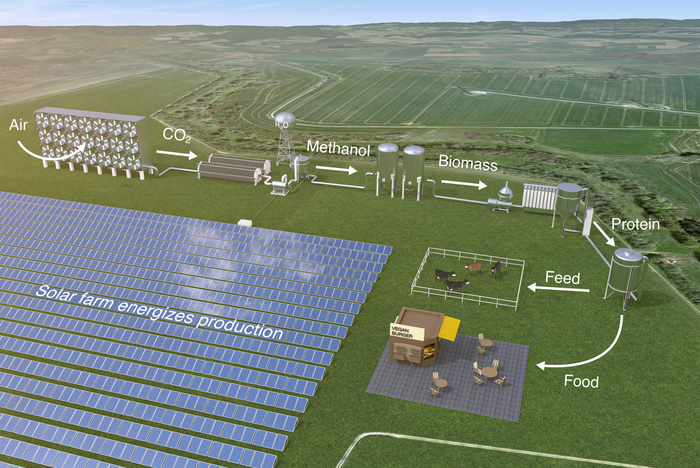 In 1968 Paul Ehrlich wrote the controversial book, The Population Bomb, in which he argued that we had lost to battle to feed the world and would soon face massive starvation. He also argued that overpopulation was the number one threat to the environment. In a 2018 review, Smithsonian Magazine argues that Ehrlich’s book, in addition to being clearly wrong in its predictions, had a large effect on the environmental movement itself, moving it toward believing that overpopulation was their most urgent issue. This in turn also lead to a host of repressive and abusive policies around the world, especially toward women.
In 1968 Paul Ehrlich wrote the controversial book, The Population Bomb, in which he argued that we had lost to battle to feed the world and would soon face massive starvation. He also argued that overpopulation was the number one threat to the environment. In a 2018 review, Smithsonian Magazine argues that Ehrlich’s book, in addition to being clearly wrong in its predictions, had a large effect on the environmental movement itself, moving it toward believing that overpopulation was their most urgent issue. This in turn also lead to a host of repressive and abusive policies around the world, especially toward women.
Even today, whenever I blog about related issues such as organic farming, it is common for someone in the comments to essentially argue that we need to allow millions or billions of people to starve to death in order to control population, which is the single most important thing. The “overpopulation purists” are following in Ehrlich’s legacy.
Ehrlich, however, was completely wrong in his predictions because he missed the green revolution, the remarkable ability for technology to be leveraged to increase the productivity of an acre of farmland several fold. We are now facing a similar situation, with scientists warning that the world population will likely increase to about 10 billion people by sometime around 2050. Yet, we are already exploiting most of the available arable land, so simply expanding farmland is not a great option. Any further expansion will extend into progressively less productive land, or into forests or occupied land. Further, land use is the greatest impact that farming, and in fact humans, have on the environment. If anything we should be looking for ways to return land to a natural ecosystem, in order to minimize extinctions due to loss of habitat.
Just because I disagree strongly with the overall position of the overpopulation purists, that doesn’t mean they don’t have somewhat of a point. It is probably a good idea to stabilize the human population on the Earth at some point. Fortunately, we know from experience how to do this – when we lift people out of crushing poverty and grant basic rights to women, then populations stabilize (without having to starve anyone). These are things we should be doing anyway, and we have an extra incentive to do so.
Continue Reading »
Jul
23
2021
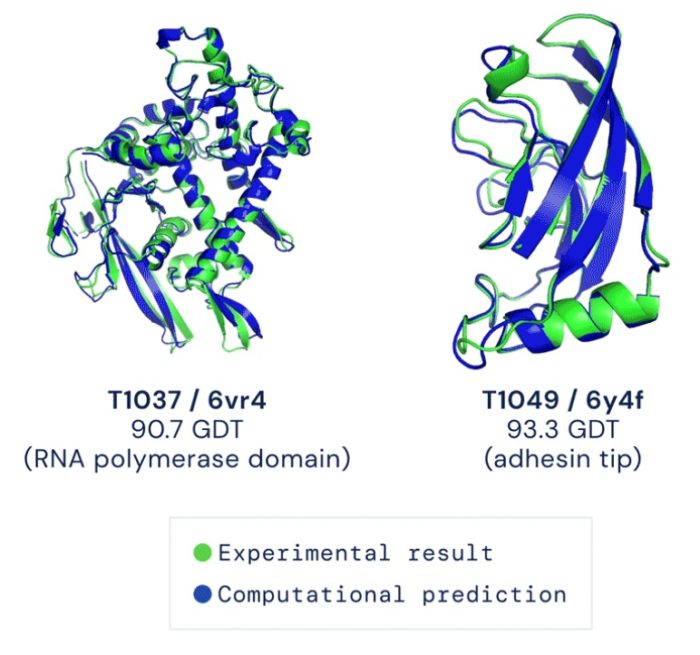 In 2003 the largest ever international cooperative scientific project was completed, at a cost of about $1 billion – the mapping of the human genome. This came with much fanfare, with the media hyping all the medical benefits that would soon flow. Of course, basic science progress often precedes clinical applications by decades, so the hype was not necessarily wrong, just premature. But it was an immediate boon to research, and those benefits are being felt today.
In 2003 the largest ever international cooperative scientific project was completed, at a cost of about $1 billion – the mapping of the human genome. This came with much fanfare, with the media hyping all the medical benefits that would soon flow. Of course, basic science progress often precedes clinical applications by decades, so the hype was not necessarily wrong, just premature. But it was an immediate boon to research, and those benefits are being felt today.
Perhaps the next big mapping project in biology is the human proteome, the characterization of every human protein. (I’ll also give a nod to the connectome project, the mapping of every connection in the human brain, but that will likely take much longer.) A new study published in Nature announces a significant leap forward in mapping the human proteome, using artificial intelligence (AI), specifically AlphaFold2 developed by DeepMind. To understand what they accomplished, however, we need to go over some basic concepts and terminology.
A gene is essentially a code for a sequence of amino acids, which make up proteins. So if we have mapped the entire sequence of bases (of which there are four – GATC) in a gene, we know the sequence of amino acids in the protein it codes for. So then, you might ask, if we have already mapped all the human genes, why is that not the same thing as a map of all the human proteins? This is because a protein is more than just a sequence of amino acids. A short chain of 2 or more amino acids is called a peptide, and a long chain is therefore a polypeptide. But we still don’t have a protein. A protein is a polypeptide that folds itself into a specific three-dimensional structure. It is that three-dimensional structure which determined the function and properties of the protein.
Continue Reading »
Jul
09
2021
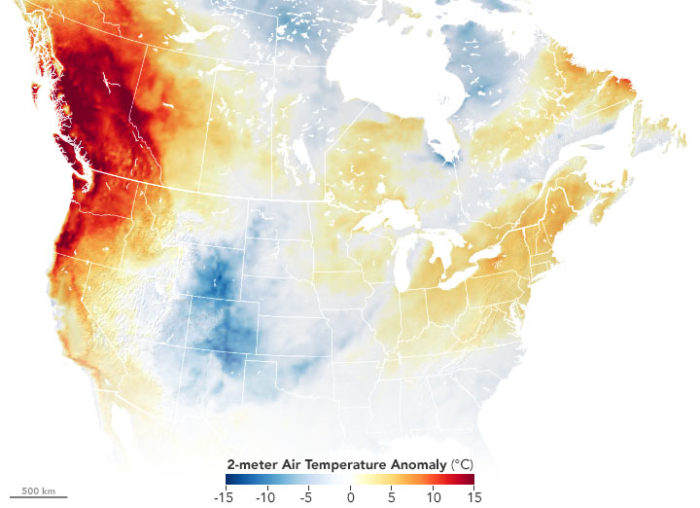 It has become a mantra of climate scientists that global warming is just what it says – global. It is a statistical average over time. It cannot be tied to any specific weather event, even if it predicts that statistically such events are more likely. However, the current heat wave in the North American Northwest is so statistically extreme, that climate scientists are discussing it in very different terms. For example, the BBC reports:
It has become a mantra of climate scientists that global warming is just what it says – global. It is a statistical average over time. It cannot be tied to any specific weather event, even if it predicts that statistically such events are more likely. However, the current heat wave in the North American Northwest is so statistically extreme, that climate scientists are discussing it in very different terms. For example, the BBC reports:
Its initial calculations suggest the odds of the sort of temperatures experienced in Canada occurring without climate change are very low indeed, says Professor Stott.
“It is telling us that changes in average climate are leading to rapid escalation not just of extreme temperatures, but of extraordinarily extreme temperatures,” he adds.
It’s like that UFO meme – “We’re not saying it’s global warming, but it’s global warming.” They can still only make statistical statement, but the probability of such an extreme heat wave is vanishingly small without AGW. This was the hottest June on record in North America. It was the fourth hottest June on record for the world. According to NOAA, 2020 was the second hottest year globally on record, just behind 2016.
Remember, 10-20 years ago, when the global warming deniers were saying that we haven’t had any global warming since 1998? They did a little cherry picking and chose 1998 as a baseline because it was a peak in the short term fluctuations caused by El Nino. It created the illusion that the warming trend had stopped, but it was always nonsense. But they used that to predict that global warming had stopped, that it was always just part of the natural cycle, and was regressing to the mean. Nothing to see here.
Continue Reading »
Jul
08
2021
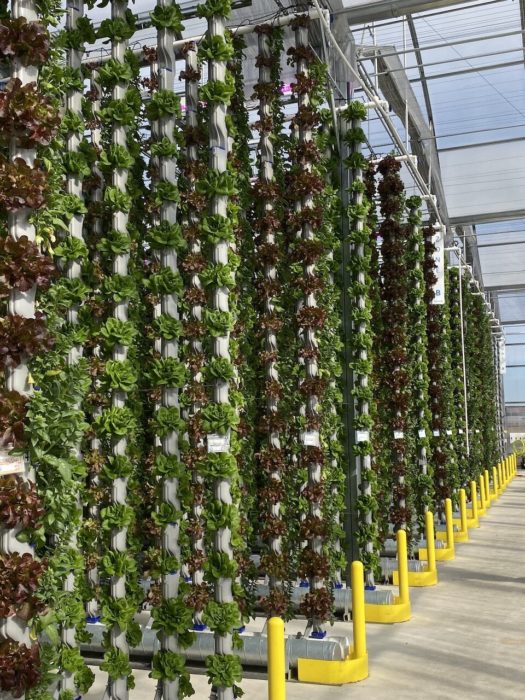 I have been hearing about hydroponics – the growing of plants in water without the use of soil – for my whole life. Epcot showcased them decades ago as the farming of the future. Hydroponic farming exists. I can buy hydroponic lettuce at the supermarket. But despite the hype, it remains a small percentage of global agriculture. Hydroponics appears to be experiencing some rapid growth, however. In 2020 the global market was estimated to be $9.3 billion, and projected to almost double by 2026.
I have been hearing about hydroponics – the growing of plants in water without the use of soil – for my whole life. Epcot showcased them decades ago as the farming of the future. Hydroponic farming exists. I can buy hydroponic lettuce at the supermarket. But despite the hype, it remains a small percentage of global agriculture. Hydroponics appears to be experiencing some rapid growth, however. In 2020 the global market was estimated to be $9.3 billion, and projected to almost double by 2026.
Modern hydroponics can be traced to botanist Julius von Sachs who in 1860 published the nutrient mixture necessary to add to water, demonstrating for the first time exactly which nutrients plants needed to grow. Since then several hydroponic systems have been developed and today modern hydroponics is very sophisticated, with precise nutritional and environmental control to optimize growing.
The potential advantages of hydroponics sound very impressive, with the only real downside is that startup costs can be high and overall price of produce is higher than conventional farming. The reason hydroponics remains niche is that it may not be as economically viable, but as systems improve this is changing. The other clear downside is that hydroponics uses much more energy. Conventional farming is mostly powered by the sun, where hydroponic farming relies heavily on grow lights. A 2015 estimate found that hydroponics used 11 times the energy of conventional farming. Here are the advantages:
Hydroponic farming allows for vertical farming, because it is not dependent on the soil. This allows for greater plant yield per unit of land, which is becoming farming’s most precious resource. Estimates of the land advantage depend on the crop and the height of the vertical farm, so there is no one figure, but it varies from several times to hundreds of times the yield of soil-based farming. Vertical hydroponic farms can be designed for optimal land use if desired, easily resulting in hundreds of times the yield of soil-based farming.
Continue Reading »
Jun
25
2021
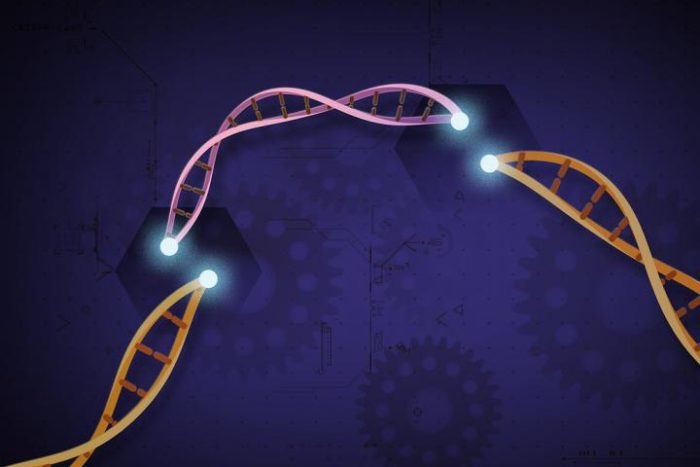 Bonus points for anyone who has managed to commit to memory what the CRISPR acronym stands for – Clustered Regularly Interspaced Short Palindromic Repeats. I still have to look it up each time to make sure I get it right, but I’m getting there. I first wrote about CRISPR in 2015. It is a method of editing genes derived from bacteria. CRISPR itself is a means of targeting a specific sequence of DNA; you load it with the desired gene sequence and it will find the corresponding sequence in the DNA. Of course, it has to do something once it gets there, so CRISPR is also combined with a payload, such as Cas9, which are molecular scissors that will cut the DNA a the targeted location.
Bonus points for anyone who has managed to commit to memory what the CRISPR acronym stands for – Clustered Regularly Interspaced Short Palindromic Repeats. I still have to look it up each time to make sure I get it right, but I’m getting there. I first wrote about CRISPR in 2015. It is a method of editing genes derived from bacteria. CRISPR itself is a means of targeting a specific sequence of DNA; you load it with the desired gene sequence and it will find the corresponding sequence in the DNA. Of course, it has to do something once it gets there, so CRISPR is also combined with a payload, such as Cas9, which are molecular scissors that will cut the DNA a the targeted location.
Since the potential for the CRISPR-Cas9 system in genetic engineering was realized, the technology has been on a steep climb of advancement. This was a new platform, one that had the advantage of being relatively quick, easy, and cheap. This means that genetics researchers round the world were all able to play with their new toy, and not only find uses for it but find ways to improve it. The basic technology slices DNA at a desired location. One limitation of this technology, as accurate as it is, there are still off-target effects. But researcher have already started to unpack how to make CRISPR slower but more accurate (vs faster but less accurate). They know how to dial in the accuracy, and it’s likely this aspect of the technology will improve further.
Also, once you make a slice in the DNA this can have a couple of effects. If all you want to do is kill the cell (like a cancer cell) you just make a bunch of slices and be done with it. If you want to inactivate a single gene your job may also be done. However, if you want to edit the gene then there is another step. You need to coax the cell into using its own repair mechanism to fix the break in the DNA while simultaneously inserting a new bit of DNA into the break. This is full gene editing, and while it’s still a bit tricky, it is much faster and cheaper than other methods.
Continue Reading »
Apr
23
2021
 After four years of backsliding on tackling climate change, it is good to see the US once again taking it seriously and trying to lead the world on climate action. Good intensions are necessary, but insufficient, however. The Biden Administration pledges a 50-52% decrease in CO2 emissions from 2005 levels by 2030. That sounds ambitious, and it is, but it is also not enough. It helps clarify how big the task is we have before us, but also how high the stakes are. Some recent studies also help clarify the picture.
After four years of backsliding on tackling climate change, it is good to see the US once again taking it seriously and trying to lead the world on climate action. Good intensions are necessary, but insufficient, however. The Biden Administration pledges a 50-52% decrease in CO2 emissions from 2005 levels by 2030. That sounds ambitious, and it is, but it is also not enough. It helps clarify how big the task is we have before us, but also how high the stakes are. Some recent studies also help clarify the picture.
First, a recent study yet again dispenses with the false dichotomy that dealing with climate change is about the environment vs the economy. Wrong. Climate change hurts the environment and the economy – so both of these concerns are in alignment. This study was done by a large insurance company (who are used to estimating risk and cost) and they concluded that climate change will cost the world economy $23 trillion in lost productivity by 2050 (compared to where we would be without climate change). Failing to tackle climate change is the costly option. Further, these costs will disproportionately affect poorer countries, increasing the wealth gap between rich and poor nations and likely causing political instability (not to mention a climate refugee crisis).
This does not even account for health care costs and lost productivity due to poor health from pollution. These costs are estimated to be hundreds of millions of dollars per year for the US and several billion worldwide.
Even if we just look at climate change through an economic lens, investing in clean energy is a no-brainer. Green technologies are the technologies of the future, and so it also makes sense for any country to invest in this industry to be competitive. Investing in these technologies would be a massive boost to our economy, with each dollar spent being returned many times over. Failure to do so is economic malpractice. Clinging to dirty 17th century technology is a loser’s strategy.
Continue Reading »
Apr
13
2021
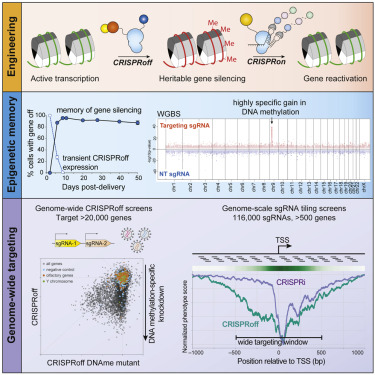 Our knowledge of genetics and the tools to engineer or modify genetics continues to rapidly progress. The most celebrated recent advance was CRISPR (clustered regularly interspaced short palindromic repeats), a bacteria-derived system that can easily target any sequence of DNA using a guide RNA. CRISPR is like the targeting system and it can be paired with various payloads, most commonly Cas9, which is an enzyme that will cut both strands of DNA at the desired location. CRISPR was actually discovered in 1993, but the CRISPR-Cas9 system was first used for gene editing in 2013, an advance that won the Nobel prize in chemistry in 2020.
Our knowledge of genetics and the tools to engineer or modify genetics continues to rapidly progress. The most celebrated recent advance was CRISPR (clustered regularly interspaced short palindromic repeats), a bacteria-derived system that can easily target any sequence of DNA using a guide RNA. CRISPR is like the targeting system and it can be paired with various payloads, most commonly Cas9, which is an enzyme that will cut both strands of DNA at the desired location. CRISPR was actually discovered in 1993, but the CRISPR-Cas9 system was first used for gene editing in 2013, an advance that won the Nobel prize in chemistry in 2020.
We are still, however, on the steep part of the learning curve with this powerful technology, and now researchers have published perhaps the greatest advance since 2013 – a way to use CRISPR as an on-off switch for genes. At the very least this will revolutionize genetic research. But it also has incredibly therapeutic potential, although other hurdles remain for applications in living organisms.
Using CRISPR-Cas9 for gene editing basically comes in two forms, knocking in genes or knocking out genes. Knocking out genes is by far the easier of the two. CRISPR targets the gene you want to silence, or knock out, and Cas9 will make a double strand cut in the DNA. The cells natural repair mechanism, called non-homologous end joining (NHEJ), the joins to the two cut ends together. This repair mechanism, however, is very imprecise and frequently introduces errors. Many of those errors will cause a shift in the genetic sequence that essentially ruins to code, effectively turning off the gene. This change is permanent, and will be carried to all later generations.
Knocking in a gene is more difficult. You not only have to make the cut at the desired location, you have to provide the genes sequence you want inserted and you need a different DNA repair mechanism called homology-directed repair (HDR), which is more precise and preserves the genetic sequence so that the gene remains active. But NHEJ is much more common than HDR, and so the trick is finding ways to enhance HDR repair so that a new gene can be successfully inserted at the repair site.
Continue Reading »
Apr
08
2021
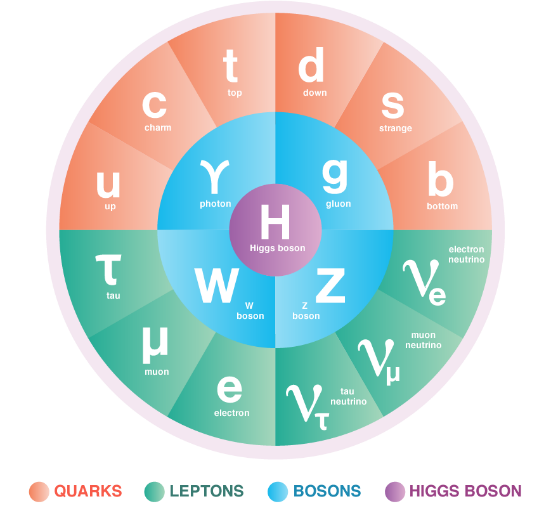 Physicists are all verklempt. Prof Ben Allanach, from Cambridge University said:
Physicists are all verklempt. Prof Ben Allanach, from Cambridge University said:
“This is the moment that I have been waiting for and I’m not getting a lot of sleep because I’m too excited.”
What could have scientists so excited? A muon that wobbled a little faster than it’s supposed to. In an experiment at the Fermi National Accelerator Laboratory (Fermilab) in Batavia, Illinois (the Muon g-2 experiment), physicists accelerated the subatomic particle muons and exposed them to a magnetic field. Muons are like electrons but 200 times heavier. They have a charge so should respond to a magnetic field by wobbling as they swing around the accelerator, and they did, but they did it a little faster than the standard model predicts they should. It was as if a force not contained within the standard model was acting on them. This experiment adds to another in Japan and yet another at the LHC also hinting at new physics. The statistical power of the Fermi results is at 4.1 sigma, or a 1 in 40,000 probability of being by chance alone. Five sigma (one chance in 3.5 million) is the threshold when the physics community accepts a claim as proven.
This is a big deal, perhaps even bigger than when the LHC confirmed the existence of the Higgs boson. That confirmed a prediction of the standard model, which is nice, but does not point the way to new physics. What physicists desperately want to do is break the standard model, to find some provable phenomenon that violates the standard model, which should lead to the discovery of a new particle or perhaps even a new force outside the current model. This is what would create the next great discovery in physics and perhaps solve some enduring mysteries, like what the hell is responsible for the acceleration of the expansion of the universe?
Continue Reading »
 The story of exactly how and when people from other continents populated the Americas is still unfolding. Scientists have uncovered stunning new evidence – score of human footprints in New Mexico dating to 21-23 thousand years ago, 5-7- thousand years older than the previous oldest evidence.
The story of exactly how and when people from other continents populated the Americas is still unfolding. Scientists have uncovered stunning new evidence – score of human footprints in New Mexico dating to 21-23 thousand years ago, 5-7- thousand years older than the previous oldest evidence.
 The Intergovernmental Panel on Climate Change (IPCC) has
The Intergovernmental Panel on Climate Change (IPCC) has  In 1968 Paul Ehrlich wrote the controversial book, The Population Bomb, in which he argued that we had lost to battle to feed the world and would soon face massive starvation. He also argued that overpopulation was the number one threat to the environment.
In 1968 Paul Ehrlich wrote the controversial book, The Population Bomb, in which he argued that we had lost to battle to feed the world and would soon face massive starvation. He also argued that overpopulation was the number one threat to the environment.  In 2003 the largest ever international cooperative scientific project was completed, at a cost of about $1 billion – the mapping of the human genome. This came with much fanfare, with the media hyping all the medical benefits that would soon flow. Of course, basic science progress often precedes clinical applications by decades, so the hype was not necessarily wrong, just premature. But it was an immediate boon to research, and those benefits are being felt today.
In 2003 the largest ever international cooperative scientific project was completed, at a cost of about $1 billion – the mapping of the human genome. This came with much fanfare, with the media hyping all the medical benefits that would soon flow. Of course, basic science progress often precedes clinical applications by decades, so the hype was not necessarily wrong, just premature. But it was an immediate boon to research, and those benefits are being felt today. It has become a mantra of climate scientists that global warming is just what it says – global. It is a statistical average over time. It cannot be tied to any specific weather event, even if it predicts that statistically such events are more likely. However, the current heat wave in the North American Northwest is so statistically extreme, that climate scientists are discussing it in very different terms. For example,
It has become a mantra of climate scientists that global warming is just what it says – global. It is a statistical average over time. It cannot be tied to any specific weather event, even if it predicts that statistically such events are more likely. However, the current heat wave in the North American Northwest is so statistically extreme, that climate scientists are discussing it in very different terms. For example,  I have been hearing about hydroponics – the growing of plants in water without the use of soil – for my whole life. Epcot showcased them decades ago as the farming of the future. Hydroponic farming exists. I can buy hydroponic lettuce at the supermarket. But despite the hype, it remains a small percentage of global agriculture. Hydroponics appears to be experiencing some rapid growth, however. In 2020 the global market
I have been hearing about hydroponics – the growing of plants in water without the use of soil – for my whole life. Epcot showcased them decades ago as the farming of the future. Hydroponic farming exists. I can buy hydroponic lettuce at the supermarket. But despite the hype, it remains a small percentage of global agriculture. Hydroponics appears to be experiencing some rapid growth, however. In 2020 the global market  Bonus points for anyone who has managed to commit to memory what the CRISPR acronym stands for – Clustered Regularly Interspaced Short Palindromic Repeats. I still have to look it up each time to make sure I get it right, but I’m getting there.
Bonus points for anyone who has managed to commit to memory what the CRISPR acronym stands for – Clustered Regularly Interspaced Short Palindromic Repeats. I still have to look it up each time to make sure I get it right, but I’m getting there.  After four years of backsliding on tackling climate change, it is good to see the US once again taking it seriously and trying to lead the world on climate action. Good intensions are necessary, but insufficient, however. The Biden Administration pledges a 50-52% decrease in CO2 emissions from 2005 levels by 2030. That sounds ambitious, and it is, but it is also not enough. It helps clarify how big the task is we have before us, but also how high the stakes are. Some recent studies also help clarify the picture.
After four years of backsliding on tackling climate change, it is good to see the US once again taking it seriously and trying to lead the world on climate action. Good intensions are necessary, but insufficient, however. The Biden Administration pledges a 50-52% decrease in CO2 emissions from 2005 levels by 2030. That sounds ambitious, and it is, but it is also not enough. It helps clarify how big the task is we have before us, but also how high the stakes are. Some recent studies also help clarify the picture. Our knowledge of genetics and the tools to engineer or modify genetics continues to rapidly progress. The most celebrated recent advance was CRISPR (clustered regularly interspaced short palindromic repeats), a bacteria-derived system that can easily target any sequence of DNA using a guide RNA. CRISPR is like the targeting system and it can be paired with various payloads, most commonly Cas9, which is an enzyme that will cut both strands of DNA at the desired location. CRISPR was actually
Our knowledge of genetics and the tools to engineer or modify genetics continues to rapidly progress. The most celebrated recent advance was CRISPR (clustered regularly interspaced short palindromic repeats), a bacteria-derived system that can easily target any sequence of DNA using a guide RNA. CRISPR is like the targeting system and it can be paired with various payloads, most commonly Cas9, which is an enzyme that will cut both strands of DNA at the desired location. CRISPR was actually  Physicists are all verklempt.
Physicists are all verklempt. 




